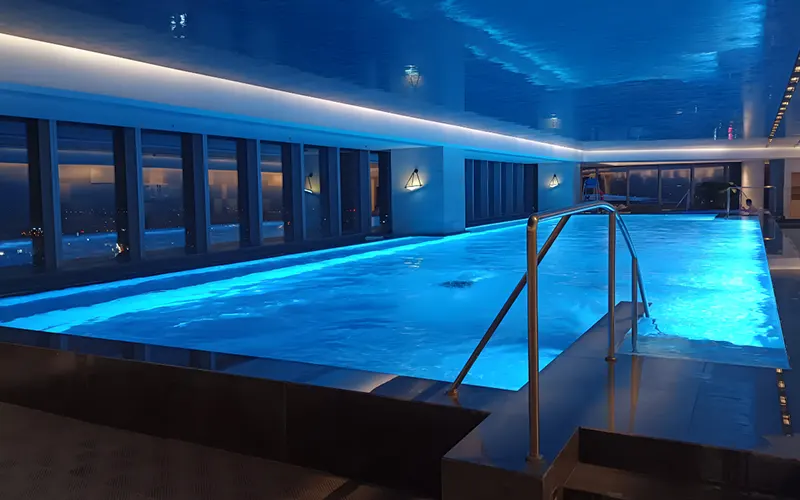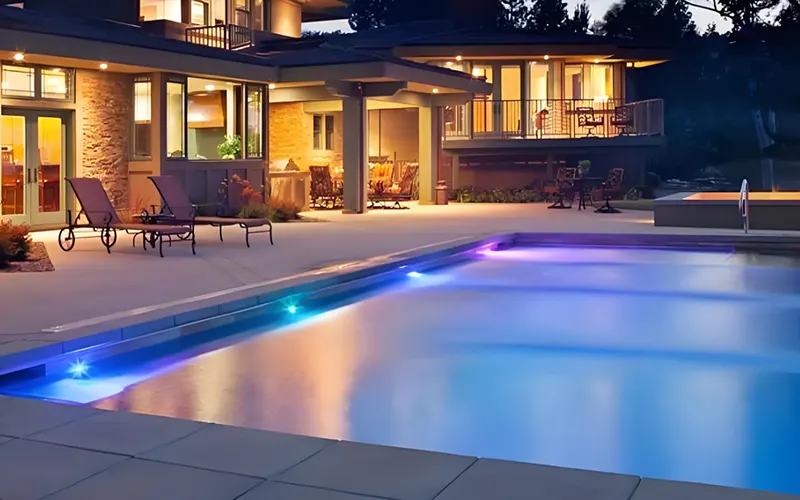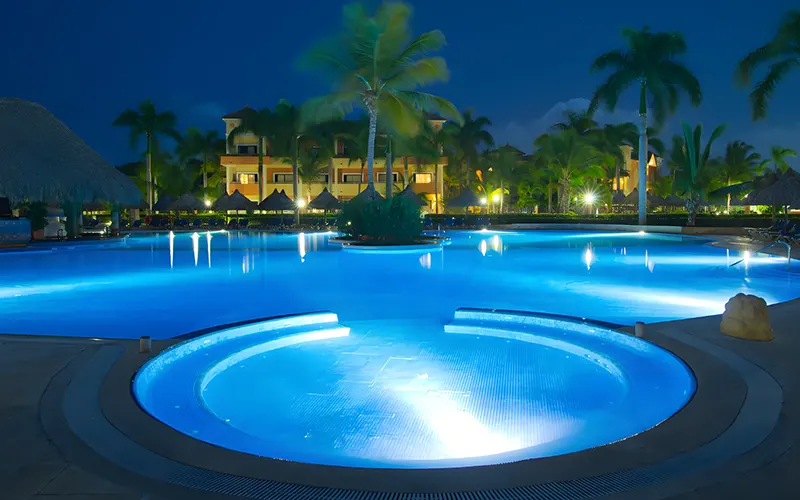LED neon lights are commonly used in swimming pool areas, creating not only an enchanting nighttime ambiance but also serving as crucial safety features. However, not all LED neon tubes are suitable for use in swimming pools. These delicate lighting fixtures are particularly susceptible to damage from prolonged exposure to moisture, chemicals, and extreme temperatures. This article systematically explains the selection and maintenance procedures for IP68-rated pool LED neon lights, from daily cleaning to troubleshooting, to help you maintain optimal lighting. More details, pls note that A Guide to Underwater Pool LED Strip Lights 2024
Why is Maintaining Pool Neon LED Lighting So Important?
The primary concern is safety, as pool LED neon lights are used near water or underwater. If not properly maintained, electrical failures can occur, potentially putting personal safety at risk.

Safety Considerations
If LED neon lighting in a swimming pool environment become damaged, aged, or have seal failures, they are highly likely to cause safety hazards such as short circuits. This is especially true when the strips are installed near the water surface or embedded in the pool’s edge. Even a minor electrical fault can pose a threat to personal safety.
Cost Considerations
High-quality LED neon lights offer a long lifespan, but this lifespan can be significantly reduced if not properly maintained. Issues such as moisture corrosion, circuit aging, and physical damage often accelerate lamp degradation, leading to frequent replacements.
Performance Maintenance
LED light strips exposed to sunlight, rain, and pool chlorine for extended periods of time can easily experience light fade and color deviation if not cleaned or adjusted promptly. In particular, neon light strips in RGB or DMX control systems can experience color desynchronization and flickering if the control signal is unstable.
Waterproof Protection
Only neon lights with an IP68 rating are suitable for pool lighting. However, the waterproofing layer can fail over time due to physical wear, sun exposure, or aging connectors.
If moisture penetrates the interior of the light strip, it can cause serious problems such as corrosion of the circuitry and short-circuiting of the LEDs, rendering the entire strip useless. Therefore, regular inspection and resealing of openings, solder joints, and connectors is crucial to ensuring the lighting is truly waterproof.
Things to Note About Pool Neon LED Lighting
LED neon tubes are used for pool lighting, and the health of the light strip is the most intuitive indicator of its health. If the following problems occur, immediate maintenance is required: If you need choose the IP68 neon strip for your swimming pool, pls read How to Choose LED Neon Flex Lights for Swimming Pool?

- LED neon tubes are used for pool lighting, and the condition of the light strip is the most intuitive indicator of its health. If the following problems occur, immediate maintenance is required:
- Flickering or intermittent lighting: This may indicate unstable voltage or loose connections.
- Partial dimming or abnormal color: This may indicate LED chip damage or control signal transmission anomalies.
- Abnormal light strip heating: If LED neon tubes suddenly overheat, it may indicate excessive power load or aging of the internal circuitry.
- Water mist or condensation seeping into the lamp body: This indicates a failure of the waterproof seal and requires resealing or replacement.
- Slow or ineffective controller response: Check the power supply, signal cables, or control module for damage.
How Do I Maintain My Power System and Fix Pool Neon LED Lighting Problems?
The power supply system is essential for the proper functioning of your pool LED neon sign. Regular inspections should begin at the distribution box to confirm the RCD is functioning properly and check for loose terminals, corrosion, or overheating.

1: What should I do if part of the pool neon LED lighting stops working?
First, check for loose connections or power outages. Also, test the controller to see if it’s outputting signals properly.
If a section doesn’t light up at all, it could be a damaged LED chip or a broken circuit. Cut off the damaged section and reconnect it using a connector.
2: How can I correct flickering or color synchronization errors?
If color synchronization issues occur, check that the cables connecting the controller and light strip are secure. Alternatively, replace the data cable or control signal module to test if synchronization is restored.
3: How can I replace a worn or damaged neon pool neon LED lighting?
If you find that multiple LEDs are not lighting or flickering frequently, turn off the power first. Then, remove the LED neon tubes to identify the problem. Then, address the issue accordingly.
Cut off the damaged section and select a compatible model (voltage/size/color temperature). Use waterproof connectors or soldered joints, seal them, and conduct a 48-hour waterproof test.
Conclusion
Maintaining IP68 neon pool LED lighting is a systematic undertaking, encompassing safety, technical, and economic considerations. Establishing a comprehensive maintenance system not only ensures stable operation of the lighting system and swimmer safety, but also maximizes the return on your investment. By using the troubleshooting methods provided in this article, your pool lighting system will provide years of reliable service.
We offer an IP68-rated pool neon strip, specifically designed for pool and underwater lighting. Please contact us if any needs.
